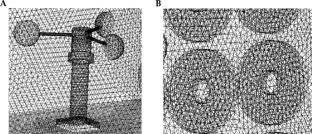Development of Three-Cup Anemometer Calibrator Using CFD Simulation
Abstract
As a common sensor widely used in near-surface wind speed measurement, the three-cup anemometer may gradually fail to measure the start-up threshold of wind speed value (0.3 m/s ~ 1.0 m/s) in environmental observation. If the indicates value is abnormal, additional outdoor calibration should be performed. The aim of this paper is to provide a numerical analysis of the key factors for field calibrator models. The resource of measurement error and the calculation of start-up thresholds for three-cup anemometers are investigated. In addition, four types of calibrator models are built. Based on the realizable k-epsilon model, the streamline and flow deviation angle of different calibrator models are analyzed. One fan set and nine fan sets are available in the model with airflow perpendicular to the specified plane. As a calibration component in the actual field calibration, the installation of a honeycomb screen at the inlet can dramatically change the airflow direction of one fan model. The honeycomb screen can also change the airflow deviation angle of a nine-fan group model to an acceptable range. In order to meet the requirements of the wind speed calibration regulation, a model with nine-fan group and a honeycomb screen best meet the field conditions. Each start-up threshold of the three-cup anemometer has a corresponding fan pressure jump at reasonable intervals.



 求助内容:
求助内容: 应助结果提醒方式:
应助结果提醒方式:


